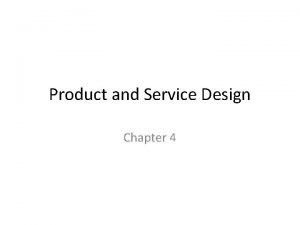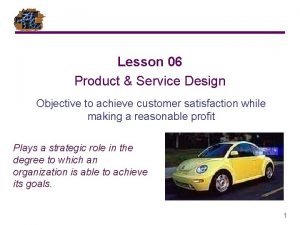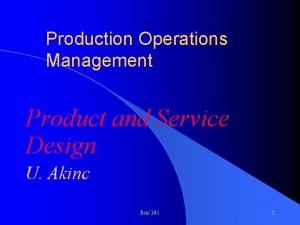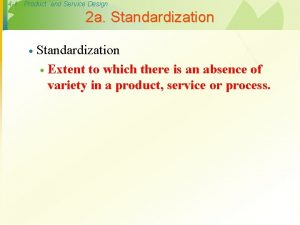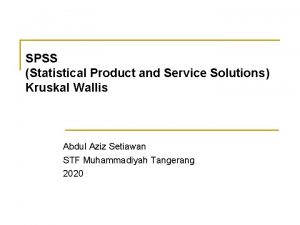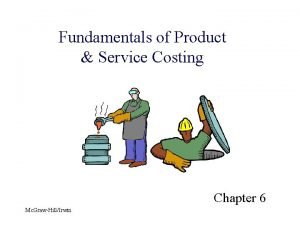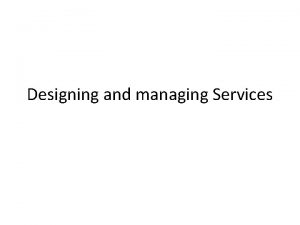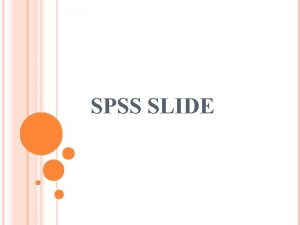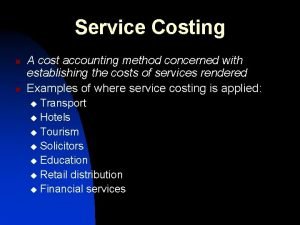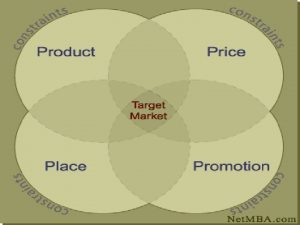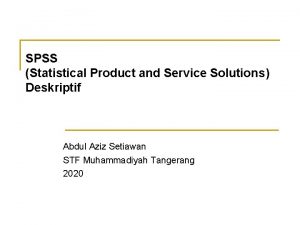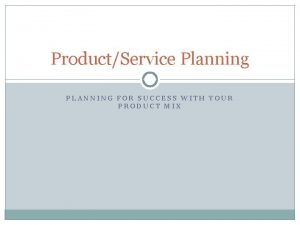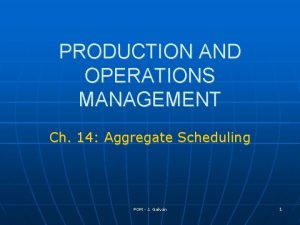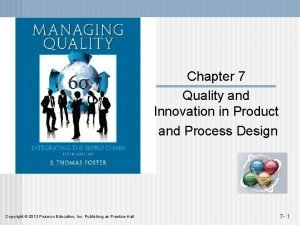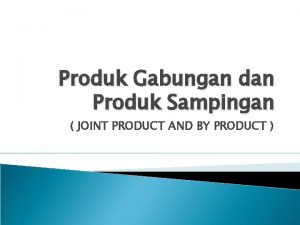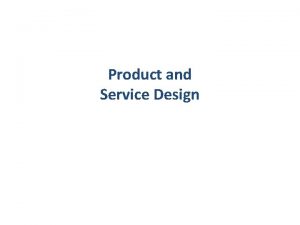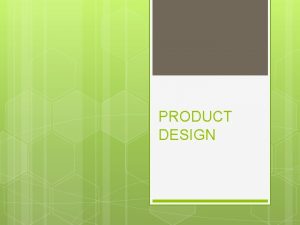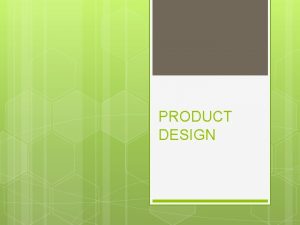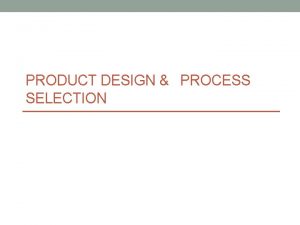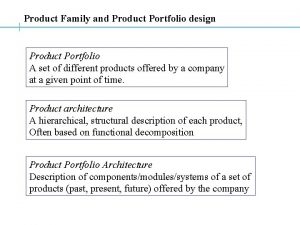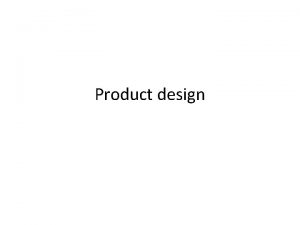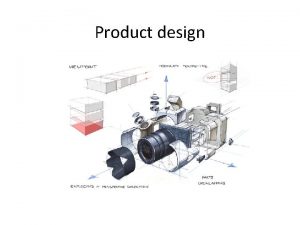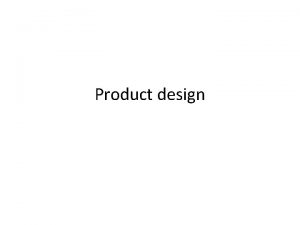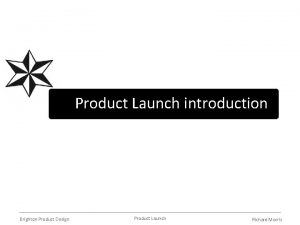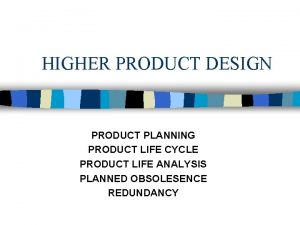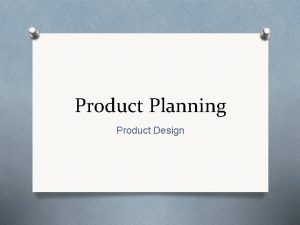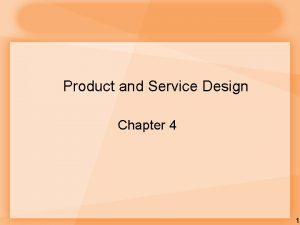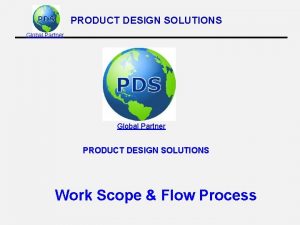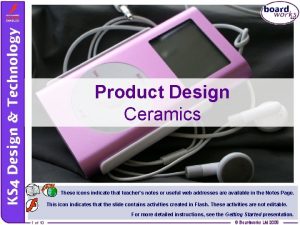Product and Service Design Product and Service Design

























- Slides: 25

Product and Service Design • • Product and Service Design Process Planning Concurrent Design and Engineering Functional Design Reliability and Analyzing Failures Design Process Quality Function Deployment Taguchi Robust Design DSCI 3123 1

Product Design • Specifies materials • Determines dimensions & tolerances • Defines appearance • Sets performance standards DSCI 3123 2

Service Design • Specifies what the customer is to experience • Determines setting and degree of customer involvement • Defines physical items, physiological benefits, & psychological benefits the customer receives • Sets standards for delivery DSCI 3123 3

An Effective Design Process • Matches product/service characteristics with customer needs • Meets customer requirements in the simplest, most cost-effective manner • Reduces time to market • Minimizes revisions DSCI 3123 4

Feasibility Study • Market Analysis • Economic Analysis • Technical / Strategic Analysis DSCI 3123 5

Perceptual Map Of Breakfast Cereals Good taste • Cocoa Puffs High nutrition Low nutrition • Rice Krispies • Cheerios • Wheaties Bad taste DSCI 3123 • Shredded Wheat 6

Process Planning • Create workable instructions for manufacture • Select tooling & equipment • Prepare job descriptions • Determine operation & assembly order • Network all systems DSCI 3123 7

Improving The Design Process 1. Implementing concurrent engineering/design and design teams 2. Analyzing functional design, reliability, and maintainability 3. Measuring design quality 4. Utilizing quality function deployment 5. Designing for robustness DSCI 3123 8

Concurrent Design • Also known as simultaneous or concurrent engineering • Simultaneous decision making by design teams • Integrates product design & process planning • Details of design more decentralized • Encourages price-minus, not cost-plus pricing • Needs careful scheduling because tasks are done in parallel DSCI 3123 9

Concurrent Design Customers Marketing Suppliers DSCI 3123 Design Engineering Production 10

Design Teams • Cross-functional –Marketing, manufacturing, engineering, finance • Vertical –Suppliers, dealers, customers • Horizontal –Lawyers, accountants, insurance companies DSCI 3123 11

Customers Marketing Design Engineers Manuf. Engineers Production Break Down the Walls Between Functional Areas

Functional Design (How The Product Performs) • Reliability –probability product performs intended function for specified length of time • Maintainability –ease and/or cost or maintaining/repairing product DSCI 3123 13

Analyzing Failures • Failure Mode and Effects Analysis (FMEA) • • • a systematic approach for analyzing causes and effects of failures prioritizes failures attempts to eliminate causes • Fault Tree Analysis (FTA) • • more visual studies interrelationship between failures DSCI 3123 14

Failure Mode & Effects Analysis DSCI 3123 15

Fault Tree Analysis Solved

Computing Reliability Components in series 0. 90 x 0. 90 = 0. 81 Components in parallel. 90 . 95 DSCI 3123 0. 95 + 0. 90(1 -0. 95) = 0. 995 17

Quality Function Deployment (QFD) • Translates the voice of the customer into technical design requirements • Displays requirements in matrix diagrams • First matrix called house of quality • Series of connected houses DSCI 3123 18

House Of Quality Importance 1. Customer requirements 5. Tradeoff Matrix 3. Product characteristics 4. Relationship matrix 2. Competitive assessment 6. Technical assessment and target values DSCI 3123 19

House Of Quality for a Steam Iron DSCI 3123 20

Series of Connected Houses Customer Req. Product Characteristics Part Characteristics A-1 House of Quality Process Characteristics A-2 Parts Deployment Operations A-3 Process Planning A-4 Operating Requirements

Benefits Of QFD • Promotes better understanding of customer demands and design interactions • Increases customer satisfaction • Breaks down barriers between functions & departments & fosters teamwork • Improves design/development process documentation • Reduces the # of engineering changes, cost of design & manufacture, and brings new designs to the market faster DSCI 3123 22

Taguchi’s Robust Design • A product or service exhibits robustness if it performs consistently regardless of the operating conditions • Designers must consider both controllable factors (design features) and uncontrollable factors (operating conditions) in design for robustness DSCI 3123 23

Consistency Is Important • Consistent errors are easier to correct than random errors • Parts within tolerances may yield assemblies which aren’t within tolerances • Consumers prefer product characteristics near their ideal values DSCI 3123 24

Quality Loss Taguchi’s Quality Loss Function Lower Tolerance Limit Target Upper Tolerance Limit
 What does product and service design do
What does product and service design do Product and service design objectives
Product and service design objectives Chapter 4 product and service design pdf
Chapter 4 product and service design pdf What is product and service design in operations management
What is product and service design in operations management Standardization in product and service design
Standardization in product and service design Product life cycle kotler
Product life cycle kotler Central idea of the production
Central idea of the production Product line and product depth
Product line and product depth Chapter 3 feasibility analysis
Chapter 3 feasibility analysis Gnp at gdp
Gnp at gdp Develop and update food and beverage knowledge
Develop and update food and beverage knowledge Types of product line
Types of product line Kruskal wallis spss
Kruskal wallis spss Fundamentals of product and service costing
Fundamentals of product and service costing Designing and managing service product
Designing and managing service product Statistical product and service solutions
Statistical product and service solutions Difference between service costing and product costing
Difference between service costing and product costing The product is a combination of
The product is a combination of Statistical product and service solutions
Statistical product and service solutions Product and service planning
Product and service planning Individual product and service decisions
Individual product and service decisions Counterseasonal product and service mixing
Counterseasonal product and service mixing Quality and innovation in product and process design
Quality and innovation in product and process design Contoh joint product dan by product
Contoh joint product dan by product Core augmented and actual product
Core augmented and actual product Cross product outer product
Cross product outer product
